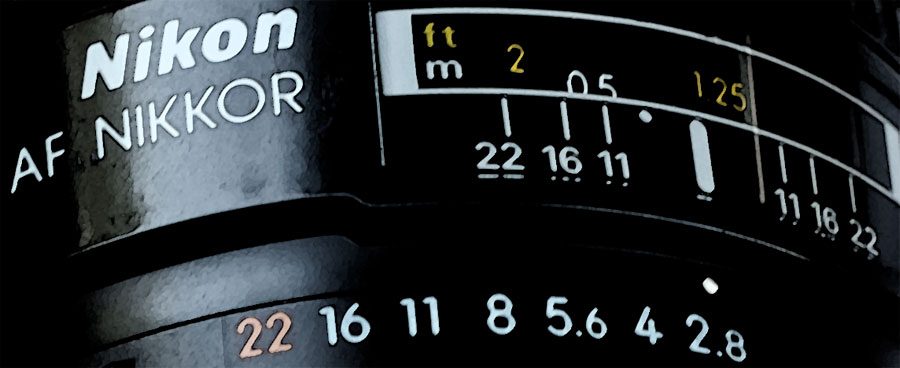As a beginner in photography, aperture is one of the first things you will learn. Photography is all about exposing your camera’s digital sensor (or film if you still use it) to the right amount of light. An aperture is simply a hole or opening through which light travels. You can adjust the aperture on your lens, to either let in more light with a large aperture (low f-stop) or less light with a small aperture (high f-stop).
Why is Aperture Important?
Lens aperture is one of the mechanisms by which you control the amount of light in your photographs (the other two are shutter speed and ISO, which will be covered in later posts). Narrow apertures (high f-stop) provide you with a greater depth of field (DOF), while wide apertures (low f-stop) create a lot of blur and narrower depth of field. For landscapes, a narrow aperture is often used, ensuring that a lot of the scene is in focus. Portraits, on the other hand, are commonly shot at a wider aperture, which helps isolate the subject by effectively blurring the background.

All this talk of large, small, wide and narrow can be a little confusing, so just keep it simple and think in terms of depth of field:
- A small f-stop gives you a narrow depth of field – think portraits with a blurry background.
- A large f-stop gives you a wide depth of field – think landscapes where many elements are in focus.
Lens Aperture in Practice
In order to learn about aperture and how it affects the look of your images, use your camera’s aperture-priority mode (A on Nikon, AV on Canon). In this mode, you select the aperture you want to use and your camera will set the shutter speed to achieve the proper exposure. When you change the aperture, your camera will compensate by adjusting the shutter speed. It may seem confusing at first, but when you get out there with your camera and start taking photos, you will understand how aperture and shutter speed are related.
Check out the following example to see what I mean:
Let’s say you shoot an image at f/8 with a shutter speed of 1/250 second. If you decrease the aperture to f/7.1, your shutter speed will increase to 1/320 second because the aperture opening is larger and more light is reaching your sensor (or film:)). Conversely, if you increase the aperture to f/9, your shutter speed will decrease to 1/200 second because less light is reaching your camera’s sensor. Go take a bunch of pictures using different apertures, both large and small. Pay attention to how adjusting your lens aperture affects shutter speeds.
Understanding aperture opens up a whole new world of photographic possibilities. With practice, you’ll intuitively know what aperture you want to use in different situations. By determining how much of your scene you want in focus, you will know which f-stop to choose. Stay tuned for more photography info for beginners, and subscribe to our newsletter for weekly photo tips delivered straight to your inbox.
Did you like this post? Feel free to share it and subscribe to our newsletter for helpful photography tips, resources and information delivered straight to your inbox. Simply enter your email in the opt-in above. Your email address is safe with us, and we will never share it.
If you have any questions or comments, please leave them below. I will respond as soon as possible.

